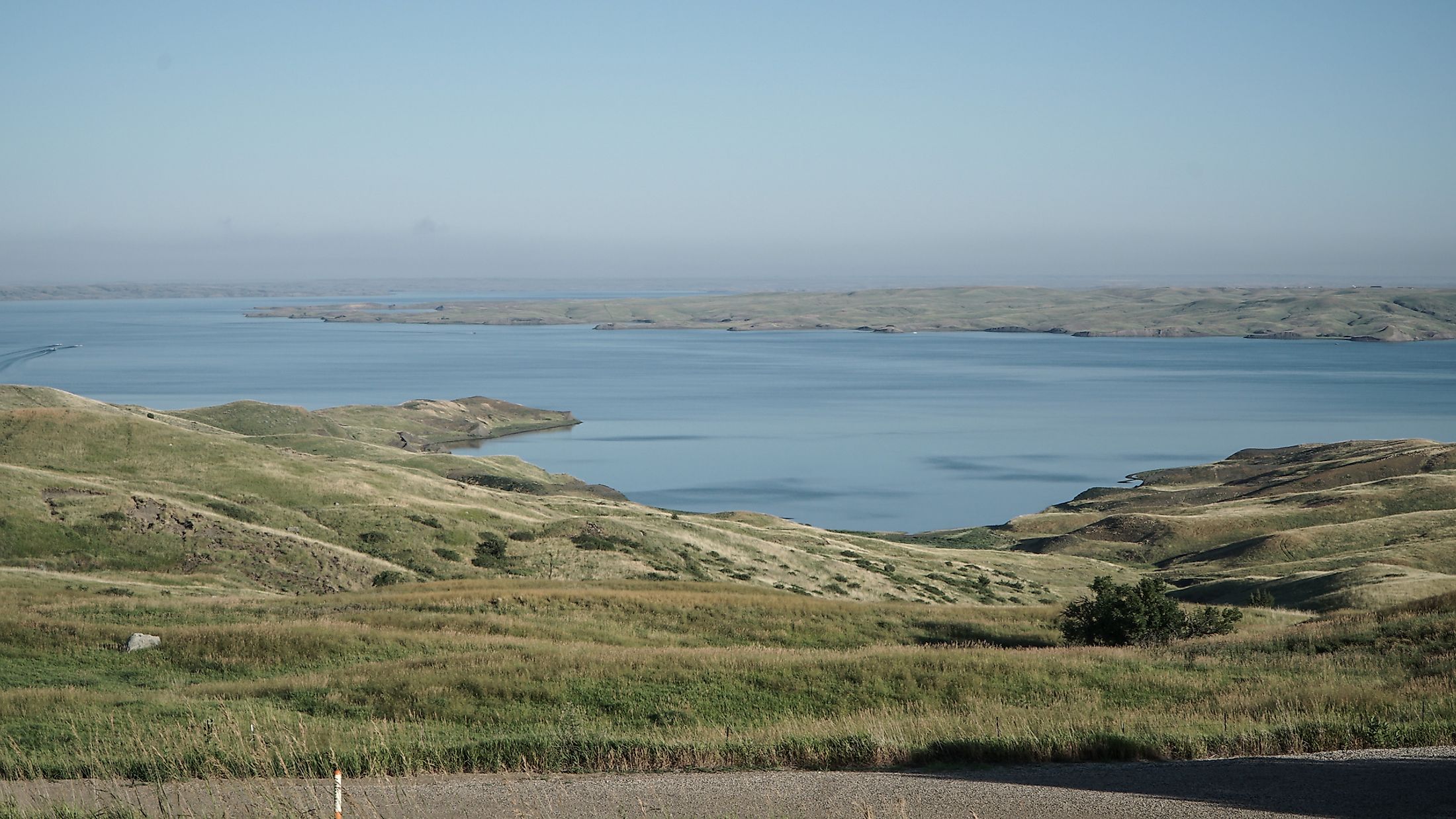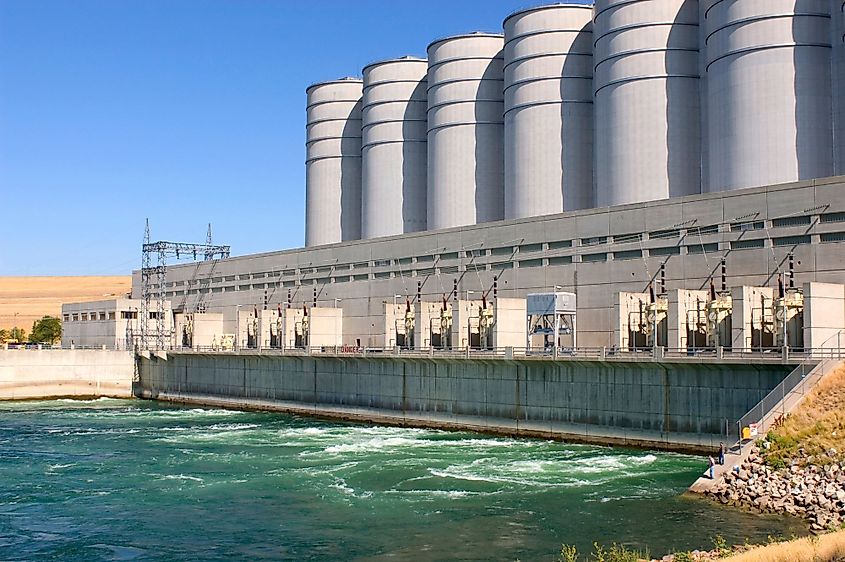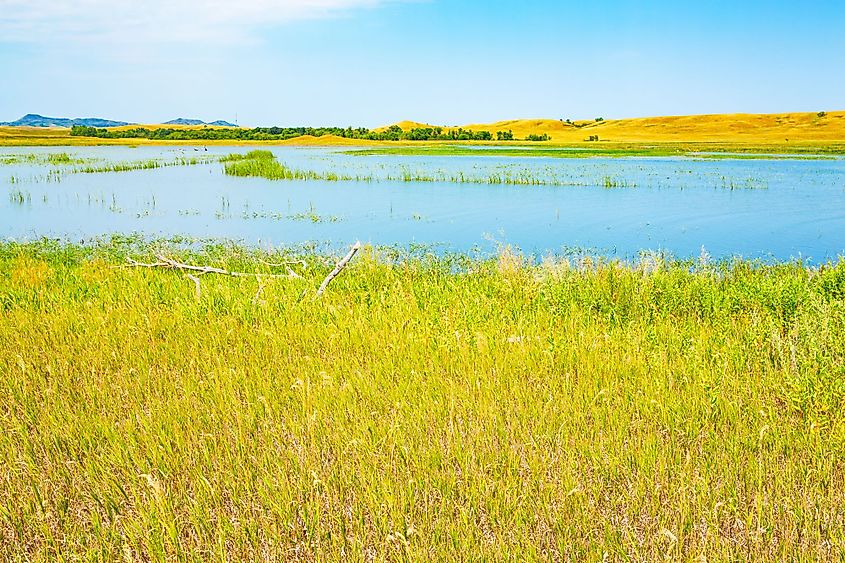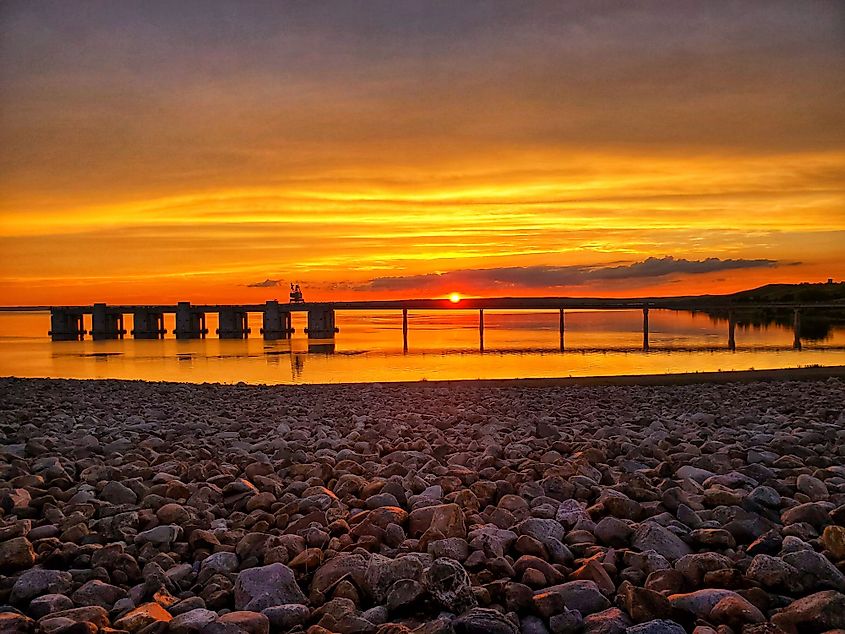
Lake Oahe
Lake Oahe is a man made reservoir, created by the damming of the Missouri River, by way of the Oahe Dam. The lake itself covers portions of both North Dakota and South Dakota, and has an average area of 1,500 square kilometers. By volume, Lake Oahe is the fourth largest reservoir in the United States. The lake also has a very long shoreline, of around 3,620 kilometers. The lake has a length of about 372km and reaches a maximum depth of 62m.
Brief History

The name Oahe comes from the 1874 Oahe Indian Mission. A major part of the western edge of the lake is occupied by the Cheyenne River Indian Reservation and the Standing Rock Indian Reservation, and is believed that the burial site for famed Sioux leader Sitting Bull is also situated in the area. The Missouri River Basin has historically been an important and popular site within the Native American tribes and culture, but controversy arose when the construction of the Oahe Dam led to major flooding in areas of both of these reservations. Those living in the area were forced to relocate, and have been seeking compensation for their losses since then.
Visiting Lake Oahe

Lake Oahe is an extremely popular location for visitors and offers a number of recreational activities. Roughly 1.5 million visitors come to the lake each year, and there are over 50 different recreational areas along the lake’s edge. Oahe Downstream Recreation Area and others like it offer a wide range of outdoor activities such as boating facilities - including ramps and marinas, campgrounds, hiking trails, picnic areas and a number of licensed hunting and fishing opportunities.
Wildlife
Fishing is one of the most popular recreational activities on the lake, and a variety of fish call the lake home. These species include smallmouth bass, walleye, northern pike, and channel catfish. Additionally, Chinook salmon live in the lake, though they are not native to the area, and are mostly a human-cultivated population here. The lake also has a population of pallid sturgeon, which is an endangered species endemic to the Missouri and lower Mississippi river basins of the United States.
The Dakota Access Pipeline Issue

Aside from the controversy surrounding the original creation of the lake, which included the flooding of native reservations and traditional territory, the lake has also sparked controversy surrounding the issue of a pipeline. The Dakota Access Pipeline was originally intended to pass underneath the lake, raising environmental concerns, specifically among the tribes and reservations in the area. The Standing Rock Indian Reservation petitioned against the routing of the pipeline through their land, which did pause the proceedings in order to investigate alternate routes. However, Donald Trump - the then President of the United States expedited the order. The Cheyenne River Sioux responded by filing the first legal challenge for the easement of the construction, but the pipeline was eventually placed roughly 27 to 46 kilometers below the lake’s surface. Environmental concerns remained, however the Standing Rock Sioux Reservation water outtake was created about 100 kilometers downstream in hopes of eliminating any potential contamination. Thus far, no official contaminations have been recorded, but the pipeline remains a source of contention for many residents in the Lake Oahe area.











